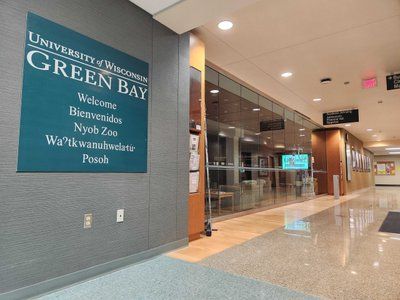By Tom Still
MADISON, Wis. – A strange thing happened at the global climate summit in Glasgow: Nuclear power was not given the customary back of the hand.
After years of standing outside looking in, atomic power gained a seat at the COP26 international table. Given that nuclear energy is a large and steady source of electricity, minus the carbon dioxide that comes with fossil fuels, many experts argue it was a much-belated invitation.
There’s nothing like a full-blown climate crisis to compel a second look at an industry that has been a part of “decarbonization” since the 1950s and which provides nearly 30% of the world’s emissions-free power.
The rethinking of atomic power – while far from conclusive – is a trend that could increasingly involve the UW-Madison, home to one of the nation’s top-ranked nuclear engineering departments.
Nuclear energy is part of decarbonization plans released of late by the United States, China, Russia, Brazil and the United Kingdom. During the COP26 conference (short for the 26th Conference of Parties), the United States announced a long-term partnership to install five next-generation, modular reactors in retired Romanian coal plants.
“We’re very bullish on these advanced nuclear reactors,” U.S. Energy Secretary Jennifer Granholm said during the Scotland conference. “We have, in fact, invested a lot of money in the research and development of those. We are very supportive of that.”
Over time, some of those research dollars have been invested in the UW-Madison, which routinely shows up among the nation’s top nuclear engineering programs.
The College of Engineering produces graduates who work in nuclear energy generation, but also in fields such as medicine, where radiation and radioisotopes are routinely used to diagnose and treat illness. Controlled radiation plays a role in sectors such as space exploration, food preservation, chemical production, and mechanical and structural safety checks. Wisconsin research has accelerated the nascent field of nuclear fusion.
The bipartisan infrastructure bill passed by Congress envisions pilot projects for modular reactors and carries about $8.5 billion for existing nuclear plants, including money to keep them producing power for a while. President Biden’s “Build Back Better” bill contains a production tax credit for next-generation nuclear plants. American startups such as NuScale, TerraPower and X-energy have submitted plans for review by the federal Nuclear Regulatory Commission.
Outside the United States, France is preparing to re-launch construction of nuclear reactors. European Union regulations may soon list nuclear energy as “climate friendly.” China is planning 150 reactors over the next 15 years. Russia is getting involved in new projects. Developing nations don’t want to be caught in the anti-coal backlash and see nuclear power as a path to maintain their new-found industrial capacities.
Toss in rising prices for fossil fuels and renewed anxiety over climate change, nuclear energy seems poised for a comeback. Or is it?
The process of enriching uranium to make it into fuel for nuclear power stations can also be used to make nuclear weapons, which is why Iran’s refinement progress causes alarm. Could others do the same?
Commercial accidents such as Three Mile Island in 1979, Chernobyl in 1986 and Fukushima in 2011 shook public faith. Compared to the daily health and climate dangers of burning coal, however, the nuclear industry’s past safety record may seem like a reasonable tradeoff as modular reactors are proven.
Solar, wind and other sustainable sources are becoming a bigger part of the picture every day, but skeptics say more baseload generation is needed to supplement them.
“These advanced nuclear reactors, and the existing fleet, are safe,” Granholm said in Glasgow. “The holy grail is to identify clean, baseload power. … Nuclear is dispatchable, clean baseload power, so we want to be able to bring more on.”
Cost is what may stymie nuclear energy’s comeback. The industry must demonstrate it can build projects under budget and on time. Some predict the surge in competitive nuclear energy startups may impede standardization of safety and production standards, thus slowing the regulatory process.
As Congress looks to reviving federal investment in science, sustainability in all forms will likely be on the technology shopping list. High-quality programs in nuclear engineering such as what exists at UW-Madison should be a part of it.
Still is president of the Wisconsin Technology Council. He can be reached at tstill@wisconsintechnologycouncil.com.
###





